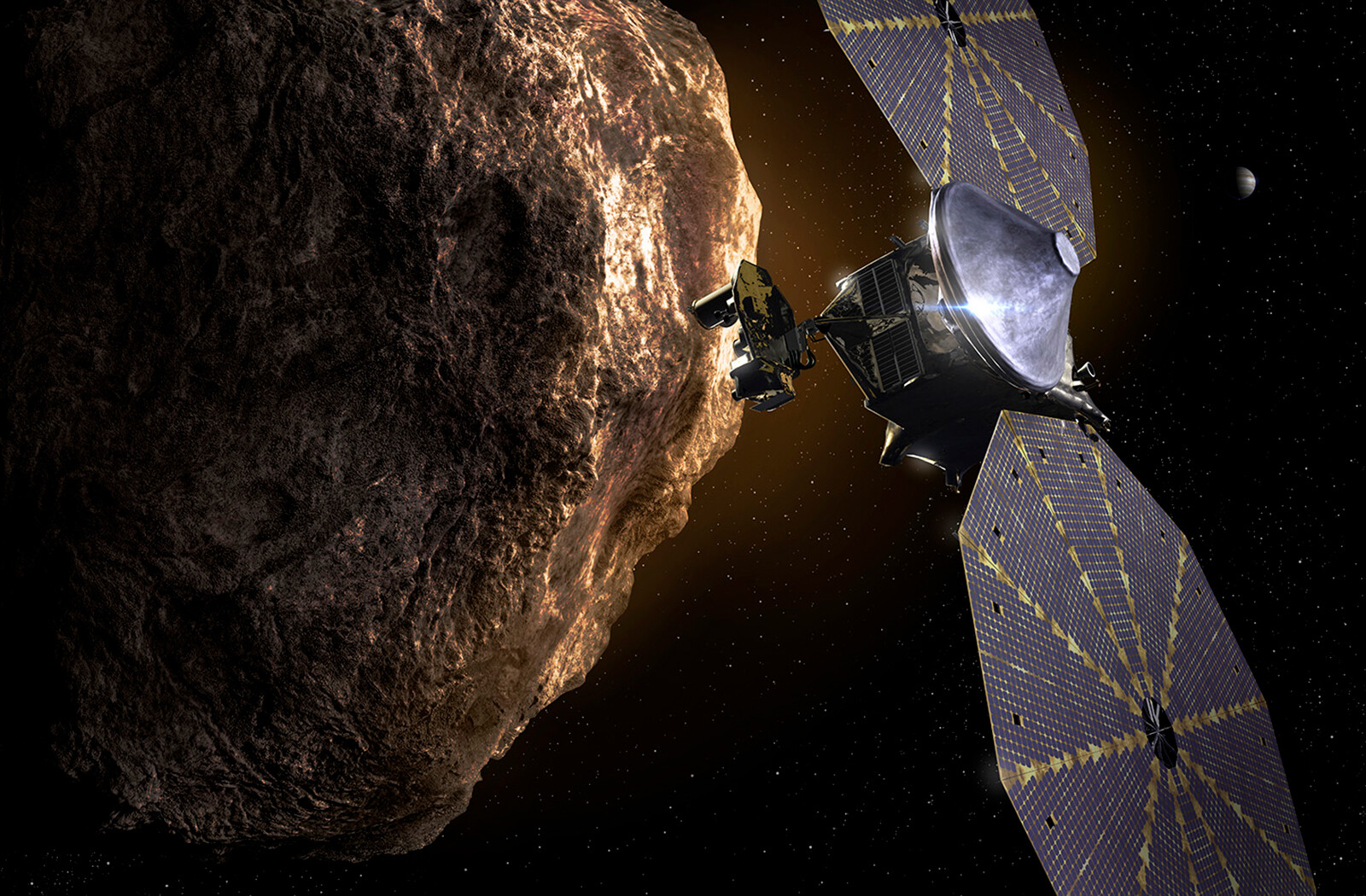NASA’s Lucy mission is struggling with a solar array problem after launching into space

The first NASA mission to fly through eight ancient asteroids was launched Saturday morning, but once the Lucy spacecraft reached space, not everything went according to plan.
After Lucy successfully separated from the rocket, he deployed both solar arrays. However, NASA only received confirmation that one of the solar arrays had fully unfolded and latched. The second array partially opened and the spacecraft did not stick.
The Lucy spacecraft is more than 46 feet (14 meters) from end to end, mainly due to its huge solar panels – about the width of each school bus. They are designed to keep the spacecraft’s equipment running. But Lucy also has the fuel to perform some skillful tricks on the way to the asteroids in Jupiter’s orbit.
“Lucy will be NASA’s first mission to travel so far from the sun without nuclear energy,” said Joan Salute, associate director of flight programs at NASA’s Planetary Science Division, at a news conference last week. To generate enough energy, Lucy has two very large spherical solar arrays that open like Chinese fans. They open autonomously and simultaneously. “
Currently, the team says Lucy’s vehicle is healthy.
According to a NASA update, “The team is looking at all available engineering data to establish how far it is deployed.” “Compared to a fully deployed wing, that solar array is generating almost the expected energy. This energy level is enough to keep the spacecraft healthy and efficient.”
Since deploying the partial solar array, Lucy has been in safe mode and performing only the necessary tasks, but on Tuesday it changed to cruise mode.
According to the agency, “this mode has led to changes in the configuration of autonomy and spacecraft, which are necessary when Lucy is away from Earth.” “The team has continued its assessment and an attempt to fully deploy the solar array is planned before next weekend.”
The team confirmed that Lucy was able to fire its thrusters to divert the spacecraft using the current configuration of the solar array. According to NASA, it will continue firing small thrusters to help manage the spacecraft’s speed.
The deployment of the instrument pointing platform on the spacecraft has been temporarily postponed due to the solar array problem, but all other post-launch plans are running as planned. The platform has scientific instruments of mission, including color and black-and-white cameras, thermometers and infrared imaging spectrometers.
The team will evaluate whether Lucy’s other planned initiatives have other long-term consequences. Currently, no adjustments are required until December for space launch.
Lucy is on a 12-year mission to find clusters of Jupiter’s Trojan asteroids, which have never been seen before. The Trojan asteroids, which take their name from Greek mythology, orbit the Sun in two clusters – one next to Jupiter, the largest planet in our solar system, and the other behind it.
So far, our only glimpse of the Trojan has been artist presentations or animations created from previous research on asteroids. Lucy will provide the first high-resolution image of what these asteroids look like.
Lucy is the first asteroid designed to visit and observe these asteroids, which are relics from the early days of our solar system. This mission will help researchers effectively look at how the solar system was formed 4.5 billion years ago. Lucy’s 12-year mission could help scientists figure out how our planet ended up in its current location.
The spacecraft is set to fly through an asteroid in the main asteroid belt between Mars and Jupiter, and then it will search for seven of the Trojans. During his mission, Lucy will return to Earth’s orbit three separate times with the help of gravity, and she will be able to draw a slingshot in the right direction. This will make Lucy the first spacecraft to travel to Jupiter and return to Earth.
The mission takes its name from the Lucy fossil, a relic of an ancient human ancestor found in Ethiopia in 1974. The skeleton has helped researchers bring together aspects of human evolution, and members of the NASA Lucy team hope their mission will accomplish a similar feat in the history of our solar system.